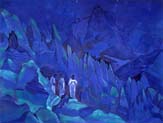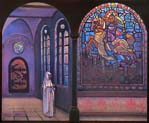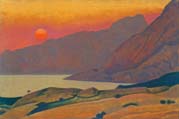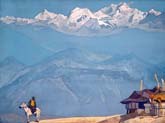Nicholas Roerich
1874-1947 Russia/History-Mystical
Click an Image to Enlarge
and we are opening
the gates

and we are trying

and we see

burning the darkness

glory to the hero

guests from overseas

himalayas

joan of arc

last angel

monhegan maine

mother of the world

path to kailas
monastery

ready for the
campaign

remember

the messenger
